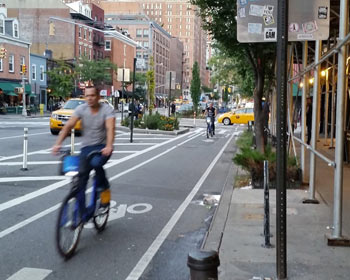MPC
Identifying What Makes Bike-Friendly Cities Safer For All Road Users
Posted: Mar 1, 2019
 Although bicycling is considered to be ten times more dangerous than driving, the evidence continues to build that bike-friendly cities are not only safer for bicyclists but for all road users. This report looks to understand why this is the case.
Although bicycling is considered to be ten times more dangerous than driving, the evidence continues to build that bike-friendly cities are not only safer for bicyclists but for all road users. This report looks to understand why this is the case.
Based on 13 years of data from 14 major U.S. cities, MPC researchers investigated nearly 19,000 fatalities, more than 83,000 severe injuries, and 3.7 million total crashes across more than 10,000 block groups via longitudinal negative binomial regression models. The results suggest that more bicyclists on the road is part of the answer but that the approaches employed to help attract more bicyclists is playing a larger role. In other words, much of the explainable variation in safety outcomes can be attributed to building denser and more urban places. This includes building better bike infrastructure with more separated bike facilities and fewer sharrows (shared lane markings). The variables representing gentrifying neighborhoods were also associated with better road safety outcomes. Overall, these variables and potential pathways for safer places are complementary and should not be considered in isolation. The results suggest that building more compact places is typically representative of lower-speed urban environments with better bike facilities, increased non-driving modes, and improved emergency response. Such combinations of factors need to be considered when looking towards trying to build a safer and healthier transportation system with an evidence-based approach.
Wesley Marshall, Ph.D.
University of Colorado
Why Are Bike-Friendly Cities Safer for All Road Users?
MPC 18-351

